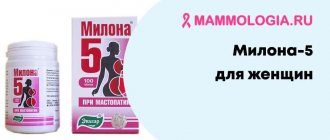Photo yesofcorsa.com
Raspberry, fieldfare, marsh cinquefoil, jointweed, sukholom - there are many different names for marsh cinquefoil. My great-grandmother called him the immortelle. As a child, I thought that this name was associated with cinquefoil flowers, because even when dry they do not lose their color. My great-grandmother placed dry cinquefoil among other plants at the icon, and from early childhood I was familiar with it. I knew well about its healing power, however, I was able to feel the true effect on myself later, when I became an adult.
A lot has been written and spoken about this medicinal plant, and for several years it has been extremely popular. But cinquefoil is used mainly in ointments and creams for joints. Manufacturers advertise them widely, and many patients expect instant results from these ointments, but this is impossible. Treatment with cinquefoil is long-term, as with most herbs. Doesn't cinquefoil help your joints? I do not believe! There is no better remedy, you just need to be patient and prepare for long-term treatment. By the way, cinquefoil treats not only joints. Did not know?
What cures
Since ancient times, cinquefoil has been used to relieve toothache and joint pain, for tumors, bruises, and hemorrhoids. It helps reduce salt deposits in joints and regulate metabolism. After treatment with cinquefoil, joint mobility increases and the normal structure of cartilage is restored. All this makes it an indispensable plant for the treatment of osteochondrosis, vertebral hernia, and sciatica. Sabelnik strengthens the immune system, treats colds, stomach diseases, and ulcers. Crushed fresh leaves will help with wounds, trophic ulcers, boils or inflammation, mastitis, and bruises. Decoctions and tinctures are used for hepatitis, diarrhea, gastric bleeding, tuberculosis, tumors of the mammary gland and stomach. Sabelnik is also taken to prevent cancer. It helps cleanse blood and lymph.
Useful properties of cinquefoil root
Sabelnik is used entirely as a medicinal plant. The rhizome has the fundamental properties, but the leaves and stems also have certain beneficial qualities. The rhizome has many components in its arsenal that have a healing effect. The tannins in its composition are used to treat tumors. But this fact is considered insufficiently studied. Research into these possibilities of the shrub is still underway.
Swamp rose has many functional capabilities, as it has the following properties:
- protection of nerve endings;
- stopping bleeding;
- pain relief;
- increased sweating;
- blocking inflammation;
- healing of wounds and abrasions.
Raw materials are collected and prepared in spring and autumn. But it is recommended to do this in the fall, since it is at this time that the plant is saturated with useful substances. When the root looks like hollow tubes, it is considered to be most effective. It is stored whole and does not need to be crushed. This is how you can preserve all the healing qualities. There are many methods of use in folk medicine, but experienced collectors claim that it promotes rapid healing of dislocations, bruises and sprains.
Complex diseases are also susceptible to cinquefoil: hepatitis, joint inflammation, sclerosis. People who use herbal decoctions and infusions report relief from complex symptoms. It is able to cope with diarrhea, dysentery and gastrointestinal upset. The sweating caused by bogweed is used to treat colds and flu. The decoction has a beneficial effect in the fight against ARVI, pneumonia and bronchitis. For various inflammations in the mouth, a decoction of the root will relieve pain and the spread of the disease.
Suholom has a complex effect on the liver, joints and muscles, as well as on the heart. It boosts immunity and promotes detoxification, which is especially useful after an infection. It is also recommended for toothache. To do this, you need to rinse your mouth with a decoction. It also has a beneficial effect on metabolic disorders and weight problems. For this purpose, decoctions and dry grain are used.
Complex treatment with dry wood is known even to doctors. For this purpose, decoctions, tinctures, and so on are used. Treatment with dry wood often occurs with the help of other beneficial herbs.
Procurement of raw materials
Sabelnik is not poisonous.
All parts of the plant are used for medicinal purposes. My grandmother collected cinquefoil grass during flowering on the new moon, and the roots in early spring or autumn during the full moon. It is easy to distinguish marsh cinquefoil from other plants. This is the only inhabitant of the swamp that has a brown tree-like stem, the continuation of which is also a tree-like root, sometimes reaching several meters, which does not need to be dug up, it is enough to pull it out without much effort. But there is a catch: since the plant has bactericidal properties, it takes a long time to rot, and therefore the root, sometimes outwardly quite alive and healthy, has actually died a long time ago. This can only be determined by cutting or breaking the root. A live one at the break will be white or slightly yellow in color, a dead one will be dark brown to black. Unfortunately, there are slightly more dead roots than living ones, and if you make a cinquefoil tincture at random, then, naturally, there will be no treatment result. Therefore, carefully check the quality of cinquefoil roots, break them and break them. In the spring, the harvesting of roots begins before the flowering period, when the cinquefoil shoots have just appeared and the healing powers have not had time to go into the leaves and flowers. In the fall, you need to wait until the cinquefoil grass has already withered. The cut roots are thoroughly washed with running water, cut into pieces half a centimeter long, and dried in the sun in a well-ventilated place. Final drying can be done in special dryers or in an oven at a temperature not exceeding forty degrees. A sign of well-dried raw materials is a cracking sound when broken; only under-dried roots bend.
The cinquefoil grass is cut off at a certain distance from the ground or water, so that the lower leaves that have turned yellow and have begun to rot will not be included in the harvest. Dry the raw materials in a well-ventilated place, protected from direct sunlight, turning and turning them frequently so that the wet raw materials do not begin to rot.
Store finished raw materials in linen bags, or in paper bags, or in glass jars in a dry place. The raw material of cinquefoil retains its healing power for three years.
Brief description of marsh cinquefoil
Marsh cinquefoil is a perennial plant that is widely known and used. This plant is called dekop, swamp rose, dry grass, swamp rose, and so on. Alternative medicine appreciates the beneficial qualities of the herb, which has a special composition and a small list of side effects and contraindications.
The subshrub grows up to one meter in height, mainly in swamps, wet forest-steppes and near water bodies. The root system is quite branched, it goes deep up to 3 meters. The stem has a reddish tint and is branched in itself. The leaves are serrated, consisting of five to seven parts. Flowering period is July-August. It grows with reddish flowers resembling stars, from which fruits are subsequently obtained.
Back in the seventeenth century, a description of the beneficial properties of cinquefoil and drinks made from it appeared. Scientists of that time said that the decoction could give vigor and energy. Healers of Siberia claimed in their notes that tea from bogwort saves from illnesses and stops old age.
The natives of Lapland used this drink to survive cold nights; according to their beliefs, the root of dekopa drove away demons and spirits, and the leaves were food for deer. In Chukotka the herb was also used as a medicinal drug. This tradition came to them from the Mongols and Japanese. In Japan it is used in medicine, recently used to treat tumors. Chinese medicine also values the plant. It is added when creating medicines for pain syndromes. Nutritionists advise using it for the effectiveness of diets and for toning. In cooking, it acts as a flavor enhancer and seasoning.
Many healing herbs have ancient legends. Sabelnik was no exception. One legend says that the people who lived in the north in swampy places suffered from various ailments. Their prayers were answered, and a rider appeared in the area, whose actions influenced the growth of purple flowers. They, in turn, helped residents cope with illnesses.
Another legend speaks of an army tired of battles. It reached the Altai lands, which amazed them with its beauty. As a sign of reconciliation, the warriors stuck their swords into the ground, and in this very place, flowers of a reddish hue in the shape of a star sprouted.
Tea
My grandmother in the village was famous for her cinquefoil tea. It was drunk during bad weather and hard work to protect joints from inflammation and gain strength. To prepare tea, pour one teaspoon of chopped grass or cinquefoil roots into one glass of boiling water, add one teaspoon of dry or soaked blueberries (cranberries or lingonberries). They drank tea in the morning and at night.
The roots of cinquefoil. Photo prom.st
Cinquefoil tincture: indications for use, recipes, reviews
The most popular and universal remedy is cinquefoil tincture with vodka or alcohol. Its effectiveness is explained by the ability of alcohol to dissolve any, even water-insoluble, components of the plant, and also very quickly deliver them to the source of the disease.
What does the tincture help with:
- joint problems;
- spinal hernia;
- diseases of the reproductive organs;
- gastrointestinal disorders.
In addition, taking the tincture has a positive effect on the body’s condition in case of hypertension, normalizes the functioning of the nervous system, and improves immunity. But the main indication for use of the drug is joint diseases. Vodka tincture has a multidirectional effect on them:
- Reduces inflammation.
- Reduces pain.
- Removes salt deposits.
- Restores cartilage tissue.
- Improves the production of synovial fluid.
Reviews of people who have undergone such treatment will help you to finally be convinced that joint problems are an indication for the use of cinquefoil tincture.
Reviews of the use of cinquefoil tincture for joints
Anna, 32 years old. There is an initial stage of arthritis of the knee joint. Taking chondroprotective drugs slightly improved the mobility of the joints, but did not help completely get rid of the pain and crunching. A colleague advised me to drink cinquefoil tincture. I bought it ready-made at the pharmacy, and after a month’s course, the crunching in my knees went away, and discomfort was felt only under heavy load. I was also surprised to discover that the crunching sound I had when turning my neck, which I had since childhood, disappeared. I’m very pleased with the effect, I’ll rest for a month and continue taking it again.
Lyudmila Sergeevna, 56 years old. I have suffered from arthrosis of the hip joint for many years. I tried everything I could - I drank chondroitin and glucosamine, applied hundreds of ointments, attached a magnet, planted bees, but the desired relief did not come. I decided to turn to medicinal plants. I made an alcohol tincture of cinquefoil myself and started taking it. At first, the pain even intensified, but I read that this was normal and confidently continued the treatment. And now, a month later, I can recommend it to everyone suffering from arthrosis. The joints became more mobile, the pain decreased, and it became more comfortable to do joint exercises. None of the drugs prescribed by the doctor gave this effect.
How to make tincture at home
The recipe for preparing the tincture may vary slightly depending on the liquid used as a solvent.
How to infuse cinquefoil in vodka:
- A 1-liter jar is filled one-third with fresh roots cut into approximately 1 cm pieces.
- Pour 0.5 liters of vodka into the prepared raw material and close the container with a nylon lid.
- Insist for at least 3 weeks in a closet or pantry.
- Strain and store in the refrigerator.
The readiness of the product can be determined by its rich red-brown color. If the liquid is still pale in color, then leave it for another 3-5 days.
How to infuse cinquefoil in alcohol:
- For 70% alcohol, which is a stronger solvent than vodka, both fresh and dry raw materials are suitable. For 0.5 liters of liquid take 100 g of dry roots.
- The mixture is placed in a dark place and kept for 3 weeks, after which it is filtered.
The tincture recipe must be selected based on the planned method of its use. It is better to use alcohol-based products only for rubbing, while cinquefoil tincture with vodka can be taken both internally and externally.
How to take the tincture correctly
For arthrosis and arthritis, take the tincture three times a day, 1 tsp, dissolving it in 50 ml of water. For the best effect, rub the joints in parallel with the product. The procedure is carried out before bedtime so that the tincture can not be washed off the skin, but the sore spots can be wrapped in woolen cloth. The course of treatment lasts 1-1.5 months. Moreover, after about a week of taking the tincture, joint pain may increase. There is no need to quit treatment, a temporary exacerbation is a normal reaction of the body to the plant, you just need to wait it out for several days, after which relief will come sharply.
For a hernia of the spine, cinquefoil tincture is drunk according to the same scheme, but when rubbed, it is applied not to the sore spots themselves, but to the area around the vertebrae.
To get rid of salt deposits , drink 1 tbsp of the tincture. three times a day for 10-15 minutes of food. Reception is continued for 20 days, after which they rest for 10 days and repeat.
The warming effect of the tincture is beneficial for respiratory diseases . If there is no elevated temperature, it is used to rub the chest and back area.
More interesting things
Find your tree: pine and birch give strength, poplar and aspen take away. Nature gives everything to man, you just need to know how to use it.
For oncology, alcohol tincture is taken 1 tsp. twice a day with meals, dissolving the product in a third of a glass of water. Treatment is continued for 1 month, then rest for 10 days. Depending on the stage of the disease, 2-3 such courses are carried out.
Rubbing
Every spring, my grandmother prepared a healing rub: poured crushed cinquefoil roots with vegetable oil 1:2, left for about a month in a dark place, filtered, poured into a dark glass jar, and closed with a tight lid.
With this remedy, my grandmother rubbed bruises, dislocations, sore joints and fracture sites (after removing the cast) two to three times a day until the condition improved. Sabelnik has virtually no contraindications for use, however, its tincture is not recommended for pregnant and lactating women, children, or those with individual intolerance to the drug. And of course, before using any herbal remedy, you need to consult with your doctor.
Photo pixabay.com
Ekaterina Zarudnaya, Arkhangelsk region
Contraindications of cinquefoil root
- Pregnancy and lactation period;
- Neurological abnormalities (epilepsy);
- Low pressure;
- Slow heartbeat;
- The presence of pathologies in the protective function of the body;
- Oncology in the active stage (increased immunity during the progressive phase of cancer can have the opposite effect);
- Children under fourteen years of age;
- Allergic reactions or intolerances.
The dosage during use must be monitored, and the treatment regimen must be prescribed by a therapist. Particular attention is paid to the compatibility of dry wood with other medicinal herbs.








